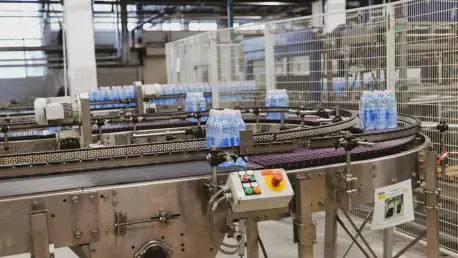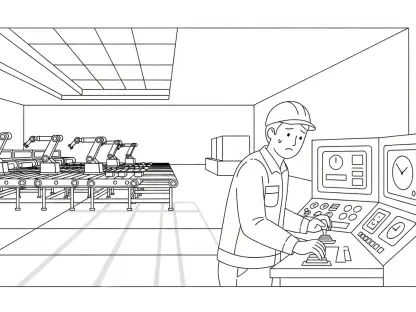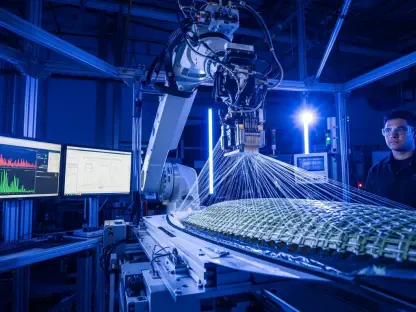Artificial Intelligence is fundamentally redefining the paradigms of the food processing industry by offering cutting-edge solutions that go beyond traditional methods. While the food industry has always been reliant on specific technological advancements, AI brings a transformative layer that enhances productivity and ensures sustainability. The sophisticated ability of AI to process and analyze massive sets of data unlocks trends and patterns previously hidden from human analysis. This newfound clarity empowers businesses to foresee operational problems before they arise. In a sector where output variability and efficiency directly impact profitability, AI enables a shift from reactive approaches to strategic foresight, optimizing both production schedules and maintenance operations. Consequently, costly interruptions are notably reduced, ensuring smoother day-to-day business operations and enhancing overall financial health.
Predictive Insights in Food Processing
Transitioning from Reactive to Proactive Operations
In conventional food processing environments, downtime due to equipment failure or unanticipated maintenance was usually addressed as crises occurred. This reactive model often led to unforeseen costs and disruptions. AI shifts this paradigm by equipping managers with predictive capabilities that mitigate surprises. AI analyzes historical data, revealing insights into equipment performance, wear, and potential breakdowns. These analytics allow the scheduling of preemptive maintenance at optimal times, reducing the likelihood of costly downtime. Furthermore, AI’s detailed data analysis aids in better workforce allocation, ensuring human resources are used effectively during peak production times. The move towards proactive strategies fosters an environment where maintenance and production are synchronized, facilitating seamless operations and uninterrupted workflow.
Enhancing Financial Performance and Workforce Satisfaction
Beyond just operational efficiencies, AI also markedly contributes to the financial aspects of the food processing industry. By maximizing output and minimizing waste, AI opens avenues for revenue enhancement without the addition of significant costs. This increase in productivity not only uplifts cash flow but also extends available capital for further business improvements or expansions. Moreover, integrating AI into processes makes individual roles more engaging, helping reduce turnover. Employees are relieved from monotonous, repetitive tasks, allowing them to shift focus towards more rewarding and dynamic job responsibilities. This diversification of tasks can lead to higher job satisfaction levels, making both the company and its workforce more vibrant and resilient in navigating challenges.
The Role of Data and Automation
Combining AI with Advanced Mathematical Tools
The food processing industry has accumulated copious amounts of data in recent years, yet the ability to extract meaningful insights from it has lapsed. AI serves as the catalyst for harnessing this growing pool of information, revealing correlations and opportunities through analytical prowess complemented by advanced mathematical models. These models translate vast datasets into clear, actionable insights. Companies utilizing these insights can make informed decisions that impact everything from supply chain efficiencies to environmental sustainability. Leveraging such data-driven insights, manufacturers can tailor their strategies to meet shifts in market demands and regulatory requirements, maintaining competitive edges in a rapidly evolving marketplace. AI excels in providing analytical outputs beyond what manual human capabilities can conceive, fostering a robust and informed decision-making ecosystem.
Elevating Human Workers with AI and Automation
The integration of AI does not mean replacing human labor but augmenting it. AI enhances human potential by offering a new dimension of support that automates monotonous tasks, allowing workers to focus on instinctive areas where human intuition and creativity are impactful. This synergy between AI and automation translates into a more invigorated workforce. Employees now partake in endeavors that require critical thinking and problem-solving skills, which are significantly more fulfilling and enriching. AI tools can assist workers in identifying inefficiencies or errors in real-time, further refining quality control processes, thus ensuring customer satisfaction. When utilized effectively, this partnership between man and machine breeds an operational culture that values innovation, collaboration, and future-oriented mindsets.
Bridging Gaps in Data Utilization
Establishing a Connection between Data and Decisions
Though the food processing industry has been adept at collecting data, the bridge between data and actionable intelligence has been tenuous without AI intervention. The industry can now bypass this hurdle by employing AI technologies that draw coherent paths from raw data points to strategic enterprise decisions. AI’s algorithms can swiftly identify outliers and trends, providing deeper insights into consumer preferences, packaging innovations, and inventory management. This analytical depth supports better alignment of production capacities with consumer expectations, minimizing resource wastage. By aligning organizational actions with data insights, companies can ensure that strategies are not only reactive but are built systematically and scientifically on sound, data-backed foundations.
Future Directions and Opportunities
Looking forward, the food processing industry stands at the cusp of widespread transformation, driven by the potent capabilities of AI. For the industry to truly harness AI’s potential, there is a need to pivot towards asking the right questions—questions that ensure AI can guide new growth avenues and refine industry habits. The coupling of automation with AI intelligence promises a roadmap to innovative success. Together, these tools can sculpt an environment where rapid change is not only accommodated but embraced, forging a path for sustainable and scalable progress. Through AI’s transformative influence, industry players who adapt now will likely find themselves as frontrunners in setting tomorrow’s standards and practices.
Embracing the Future of Food Processing
The food processing industry stands on the brink of tremendous change, fueled by the powerful influence of artificial intelligence. To fully leverage AI’s possibilities, it’s crucial for the industry to shift focus to asking strategic questions—ones that ensure AI can illuminate paths to new growth and enhance industry practices. The fusion of automation with AI intelligence provides a blueprint for innovative triumph, creating an atmosphere where rapid developments are welcomed rather than feared. This approach paves the way for sustainable and scalable advancements. The transformative power of AI suggests that those in the industry willing to adapt now will likely become pioneers, setting future benchmarks and guidelines. Embracing AI’s potential means reshaping the landscape to accommodate dynamic change, ensuring that industry leaders are ready to shape tomorrow’s practices and standards. As AI continues to evolve, its role as a catalyst for growth becomes increasingly important in crafting a future-proof industry model.









